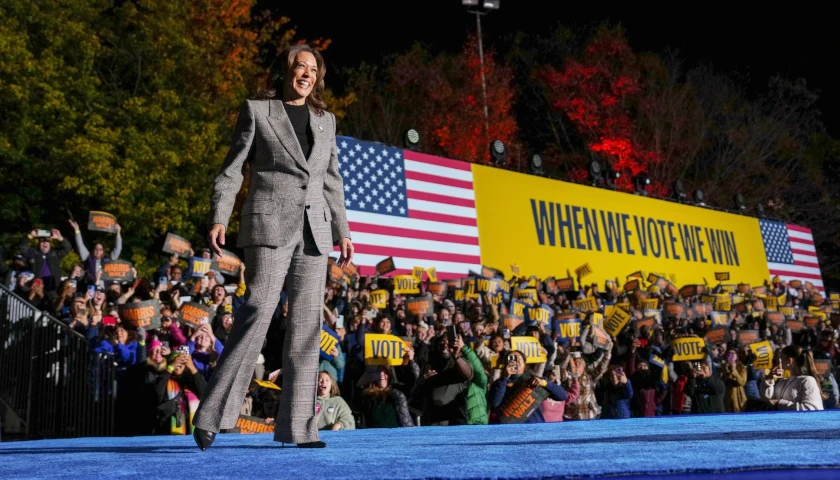by Benjamin Zycher
The Methane Emissions Reduction Act of 2021 has been proposed as a “pay-for” – a source of revenue – in the reconciliation infrastructure package. It would impose a “fee” on methane emissions from natural gas and petroleum production systems and related processes, but not on such emissions from agricultural and other operations. Accordingly, it is worse than a mere money grab: it’s a blatant exercise in punitive politics directed at the fossil-fuel energy sector, a tax on conventional energy.
Not so, says Representative Diana DeGette (D-CO), as summarized by the Washington Examiner:
“This is not a tax. It’s a fee on natural gas waste,” adding oil and gas operators have the technologies to combat methane leaks at low cost. “The smart players want to prevent waste because they can capitalize it to make money. Customers won’t be paying a fee on gas delivered. The only fee will be paid [by an operator] on what doesn’t make it to the consumer.”
Here we have a pure distillation of Washington beltway “analysis.” A “low” cost is not zero, and market forces inexorably will incorporate the fixed and operating costs of reducing emissions into competitive market prices. No other outcome is possible: a cost is a cost, and reducing “waste” is not cost-free.
One would think that if the cost of reducing methane emissions is “low,” oil and gas producers would be sufficiently perceptive to invest in such reductions. And they have done so in spades. Methane emissions from U.S. natural gas and petroleum systems have declined from 235.8 million metric tons (on a CO2 equivalent basis) in 1990 to 196.7 mmt in 2019, a decline of almost 16 percent, even as U.S. production of crude oil increased over that period from 7.4 to 12.3 million barrels per day. The corresponding increase in annual natural gas production: from 18.6 to 36.5 trillion cubic feet. That DeGette and others believe in the face of such massive trends that it’s fossil-fuel energy producers rather than politicians who are myopic is darkly amusing.
The proposed fee is far from trivial: It begins at $1,800 per ton of emissions in 2023, rising at 5 percent per year above inflation. The Environmental Protection Agency publishes estimates of methane emissions by energy-system process and by year. For natural gas and petroleum systems in 2019 (Tables 3.5-2 and 3.6-1), the EPA estimate totals about 7.9 mmt. At $1,800 per ton, the notional tax would be about $14.2 billion. But because of the real 5 percent escalator, the average yearly tax would be far higher: assuming for investment-planning purposes that the capital equipment needed to reduce methane emissions would last 20 years, the tax for 2023–2043 would average $3,288 per ton in 2023 dollars. Accordingly, the annual sum of the tax payments and the costs of reducing emissions would be substantially higher than $14.2 billion. How much higher? No one knows, a condition not consistent with the development of sound public policies.
The typical greenhouse gas “climate” justification for this proposal is vastly weaker than commonly asserted, for two reasons.
First, U.S. methane emissions from natural gas and petroleum systems are 30 percent of all U.S. methane emissions, which in turn are about 10.1 percent of all U.S. GHG emissions. American GHG emissions represent about 12.6 percent of global GHG emissions. Suppose that the proposed tax (oops, “fee”) were to eliminate all U.S. methane emissions from natural gas and petroleum systems. That would yield a reduction in global GHG emissions of less than 0.4 percent. The impact on global temperatures by 2100: about 5 one-thousandths of a degree C. How much is that worth?
Second, precisely why is the methane “fee” directed at only natural gas and petroleum systems? After all, methane emissions from agricultural operations – enteric fermentation by livestock, manure management, rice production, composting, field burning of field residues, and other processes – are over 38 percent of the U.S. total. (Emissions from landfills are another 17 percent.) These realities demonstrate that this punitive policy aimed at the fossil-fuel sector is heavily political: efforts to reduce agricultural emissions are extremely difficult and would engender highly visible adverse economic effects in terms of agricultural costs and food prices confronted by Americans every day.
The adverse cost effects of the methane “fee,” on the other hand, would be hidden in a long supply chain comprising exploration, production, gathering and transport – including an import fee based upon the asserted methane emissions of foreign producers of crude oil and refined products – refining, distribution, and on and on. Such increased costs can, and would, be blamed on the evil oil companies. And about that import fee:
Are we ready for a trade war?
In short, the proponents of the “fee” – it’s a tax, regardless of the word games that the beltway has transformed into an art form – have failed to support their implicit argument that fossil-fuel producers invest too little in reducing methane emissions, particularly given the regulatory structure already implemented.
Monitoring methane emissions directly is costly; it might have to be continuous, and no such system exists. An indirect system, as outlined in the fee proposal, would not be correlated perfectly or perhaps even closely with emissions from specific operations. This is because the proposed fee assessments would be calculated not on actual emissions, but instead on a complex formula based on average emissions intensity by geographic region and a given producer’s share of production or handling of natural gas. How would operations extending over multiple regions be treated? No one knows. So depending on localized market conditions, the emissions tax might induce a shift toward operations with higher emissions intensities.
EPA already regulates methane emissions from the fossil-fuel sector, as do several states. Moreover, the current methane regulations largely overlap with the existing regulation of volatile organic compounds (VOCs) emitted as a result of fossil-fuel operations and production. VOCs contribute to the formation of ground-level ozone, a regulatory objective very different from the “climate” rationale for the proposed methane “fee.” Regulations directed at the reduction of VOC emissions have the natural ancillary effect of reducing methane emissions as well, a reality that was recognized by the Obama administration itself (see page 49496). Note that only about a third of U.S. VOC emissions result from industrial and other economic activities; about two-thirds come from biological (“biogenic”) sources.
Energy producers have powerful incentives to capture methane that otherwise would escape into the atmosphere – they are in the business of selling energy rather than losing it – and they have powerful incentives as well to avoid consuming valuable resources in ways that fail to yield commensurate benefits. The interests of the private sector and environmental protection are far more consistent than commonly asserted: the justifications offered for the proposed methane tax make little sense, and the tax would impose substantial costs on the economy while yielding no environmental benefits. It should be rejected.
– – –
Benjamin Zycher is a senior fellow at the American Enterprise Institute.





